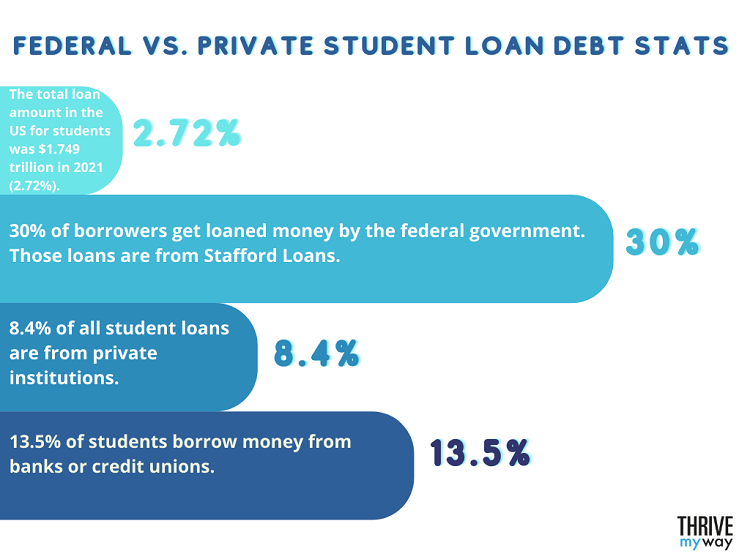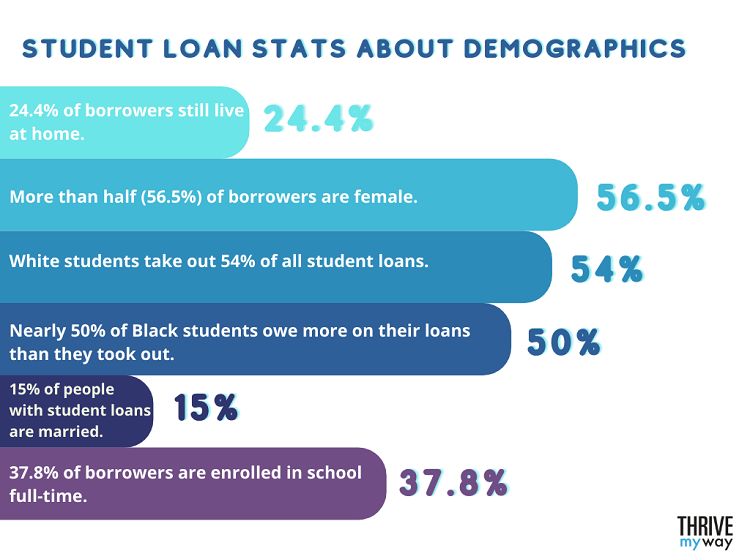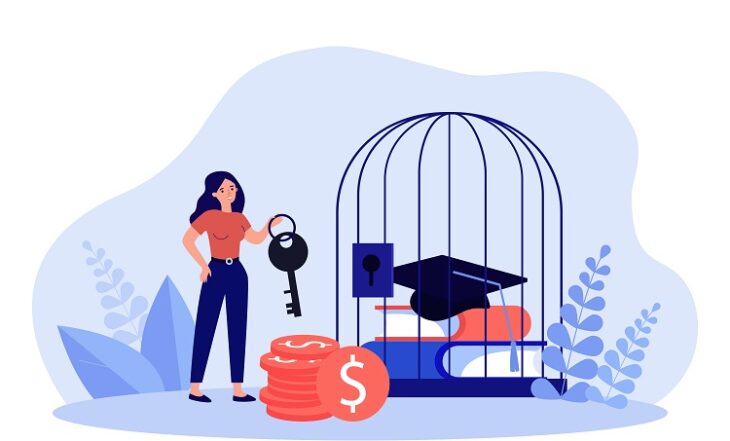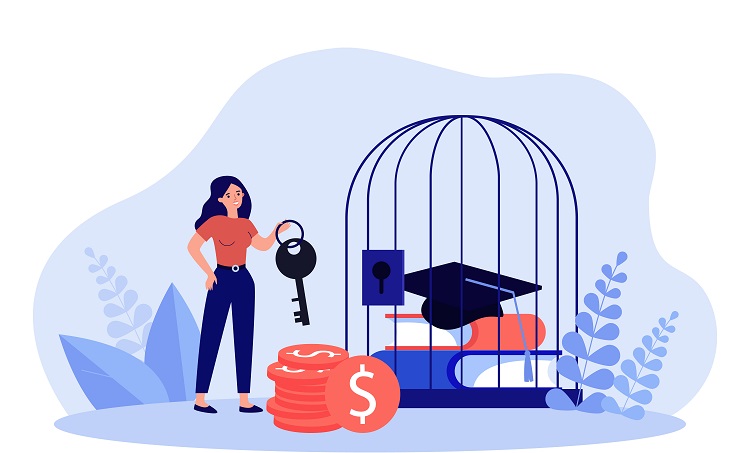Paying for college can be challenging for many students, especially in the United States.
Taking out a loan for school is more common than ever, and here are some student load debt stats that demonstrate this.
Table of Contents
ToggleGeneral Student Loan Debt Stats 2024
- 1 in 8 Americans has to take out student loans.
- 93% of borrowers take out loans for their own education, while 81% borrow for a child or grandchild.
- 75% of borrowers take out loans to attend either a 2 or 4-year college program (the remaining 25% borrow for graduate school).
- 52% of students who took out a loan said it was not worth the investment.
- Over 1 million students default on their loans each year.
- Over 296,340 people applied for public service loan forgiveness in 2020. Only 6,493 of those applications were approved.
Average Student Loan Debt Stats 2024
- The average amount of a student loan is $37,113 per person.
- Average debt amount for business school is $66,300, $145,500 for law school, and $201,490 for medical school.
- Students enrolled in a public university borrow an average of $30,030 in loans.
- Private, non-profit students borrow around $33,900, while private for-profit students take out $43,900.
- Only 6% of student borrowers make more than $100,000 a year.
- 30% of all school loans in the US are for students in California, Florida, Texas, and New York.
- The state with the lowest average student loan amount is Utah ($17,935).
- The state with the highest average student loan amount is Washington DC ($52,983).
Federal vs. Private Student Loan Debt Stats 2024

- The total loan amount in the US for students was $1.749 trillion in 2021. This was a 2.72% increase from the year before.
- 30% of borrowers get loaned money by the federal government. 52% of those loans are Stafford Loans.
- 8.4% of all student loans are from private institutions.
- In total, the amount of loans taken out with private institutions is over $140 billion.
- 13.5% of students borrow money from banks or credit unions.
Student Loan Stats about Demographics 2024

- 1 in every 4 people with a student loan also has outstanding credit card debt.
- 24.4% of borrowers still live at home. 14% live on-campus in school housing.
- More than half (56.5%) of borrowers are female.
- White students take out 54% of all student loans.
- Nearly 50% of Black students owe more on their loans than they took out.
- 15% of people with student loans are married.
- Over 3/4s of student loan borrowers are under the age of 30.
- 37.8% of borrowers are enrolled in school full-time.
Student Loan Debt Stats During the Pandemic
- Between Q2 and Q3 of 2020, student loan debt repayment decreased by 82%.
- Over 35 million students benefited from the CARES (Coronavirus Air, Relief, and Economic Security) Act.
- In 2020, the number of student loans decreased by 1.79%.
- 48.8% of borrowers have their loans in forbearance.
- 9% of borrowers enrolled in public institutions, and 31% of borrowers in private institutions were behind on their student loan payments in 2020.
You might be interested to check those related posts as well:
- 20+ Surprising Credit Card Debt Statistics [and Facts] 2024
- 30+ Cool Logos Statistics 2024 [Facts, and Trends]
- 43 Amazing Rakuten Stats and Facts [Usage & Revenue] 2024
FAQs
What percentage of the population has student debt?
Almost 13% of all people living in the US have student loan debt. That’s roughly 42 million people living in debt.
For this reason, student loans are now the second-largest form of household debt after home loans.
What percentage of students graduate with no debt?
65% of students in a 4-year university graduate with some amount of student debt. That means only 35% of students have the benefits of obtaining their degree without owing any money.
However, 25% of students graduate owing less than $25,000.
Which majors have the most student debt?
The major with the highest percentage of borrowers is a bachelor’s degree in nursing. They account for 4.2% of all loan borrowers.
This is followed by a bachelor’s in business administration (4.1%), associate’s degree in liberal arts (4%), bachelor’s in psychology (3.3%), and bachelor’s in cosmetology (2.9%).
Conclusion
Student loan debt has reached a record high. This makes it difficult for students to obtain a bachelor’s or graduate degree.
Although it’s hard to say if it’s worth the investment, we do know that this number is going to continue growing unless something drastically changes in our education system.
Sources:
- EducationData.org
- NerdWallet
- Brookings.edu
- Debt.com
- Forbes




